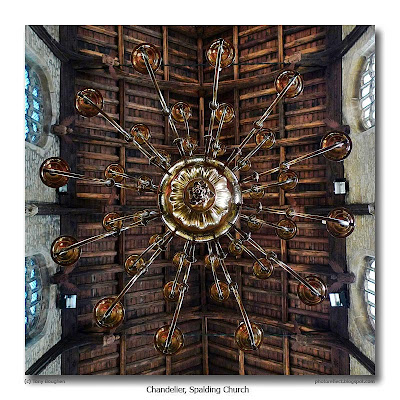 click photo to enlarge
click photo to enlargeThose who use digital SLRs often have no time for small sensor cameras. Not only do they lament the lack of control that compacts offer, they also bemoan their low-light abilities, the image quality and the difficulty in producing out of focus backgrounds - what is today called "bokeh". I use both a DSLR and a compact digital camera, just as for a couple of decades I used a 35mm SLR and a compact rangefinder camera. Why did I then - and why do I now - accept the limitations of a small camera? The answer is simple: convenience, and because usually what it produces is good enough.
Take the LX3 that I use. It has what many see as a woefully short zoom (24mm-60mm in 35mm terms), but that's a range that covers about 80% of my photography. Moreover, the limitation is actually liberating, and interestingly I find myself using 24mm much of the time and ignoring the rest of the zoom. Additionally, with most of my shots I'm aiming to maximise the depth of field, so for me the "disadvantage" of the small sensor becomes an advantage. The maximum aperture of the LX3 is f2. In the days of SLRs that wasn't anything special, with 50mm f1.8 lenses being two a penny, and f1.4 and f1.2 being not too uncommon. Today though, f2 is wider than probably 90% of DSLR lenses. Then there's the image quality, noise, etc. The LX3 output isn't as good as a DSLR: that much is obvious if you view images on screen at 100%. However, that's not the way I look at photographs. At the usual screen size I see no difference, and in prints up to A3+ I struggle to see a difference, so the output, for my purposes, is clearly good enough. Where the LX3 really scores is in its pocketability - it can go everywhere I go with no inconvenience. But there's also the quality of the straight out-of-the-camera JPEGs and the very effective iA (Intelligent Auto) mode. Because it's an enthusiast's compact the user control and the ability to customise the set up are at the level of many DSLRs. All told its a good little camera that is, yes, good enough. Having said that, I couldn't see myself with a wide-angle compact such as this as my only camera: but as camera that is complementary to the DSLR it works well.
Today's shot exemplifies some of its virtues. I set the dial to Intelligent Auto, overrode it only to the extent of dialling in -0.66EV to control the highlights, and, in a church on a dark January day, ended up with this sharp, hand-held image. The background is sufficiently out of focus to emphasise the chandelier above me, but the roof timbers and wooden angels staring down are still discernible, largely because it opened up the lens to the maximum of f2. When I compared this shot to the version I took using Aperture Priority mode it was certainly no worse.
photograph & text (c) T. Boughen
Camera: Lumix LX3
Mode: Intelligent Auto
Focal Length: 5.1mm (24mm/35mm equiv.)
F No: f2
Shutter Speed: 1/30
ISO: 200
Exposure Compensation: -0.66 EV
Image Stabilisation: On